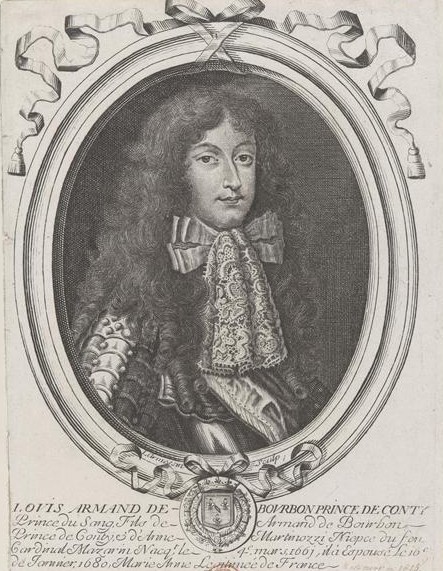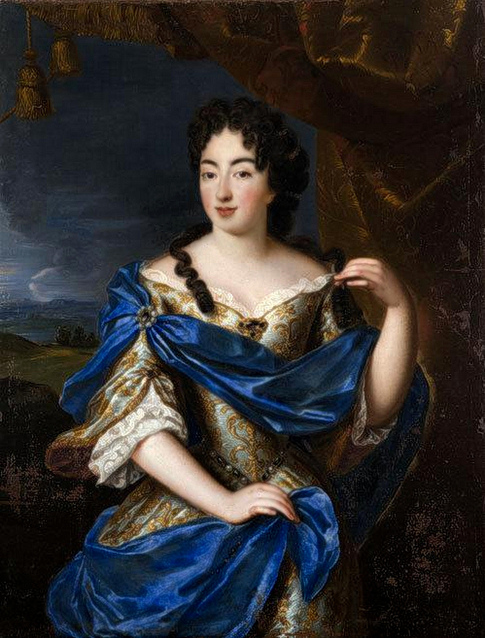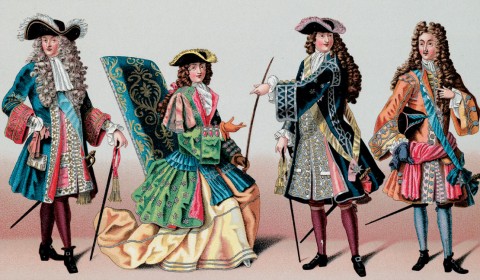Marquise-Thérèse de Gorla, called Mademoiselle du Parc
Born in 1633 in Paris, Mademoiselle du Parc was a famous actress, ballet dancer and one of the stars of Molière’s troupe.

Marquise-Thérèse was the daughter of Giacomo Gorla, who was a mountebank and barker at fairs, and of Italian-Swiss origin. Giacomo Gorla settled in Lyon in 1635 with a little troupe of actors. Marquise-Thérèse seems to have started out as a dancer, but only little is known of her before she joined Molière in 1653. They met as Molière and his troupe stayed in Lyon for a short time and Marquise-Thérèse joined them.
Shortly after, on 23 February in 1653, she married René Berthelot, a member of the troupe who went by the stage name Du Parc and became later known as Gros-René for his servant roles and figure. Marquise-Thérèse brought 3000 livres as dowry into the marriage and started to use the name Mademoiselle du Parc.
Mademoiselle du Parc was a very charming and beautiful woman, thus plenty of men fell in love with her wherever she went. As the troupe stayed in Rouen, both Pierre Corneille and his younger brother Thomas fell in love with her and engaged in a poetic jousting about the beauty of Mademoiselle du Parc. One of those, Corneille’s Stances à Marquise, was about the coldness Mademoiselle du Parc showed Corneille, who was in his fifties then, and how he might not be the youngest, but has other good qualities. It was turned into a chanson by Georges Brassens in 1962.
Marquise-Thérèse left Rouen in 1658 along with the rest of the troupe and went en route to Paris, to perform in front of the King and his brother at the Louvre. It was a great success. The following year, after ten years in the troupe, Mademoiselle du Parc and her husband parted ways with Molière. They joined Pierre Corneille’s troupe at the Théâtre du Marais, which had just re-opened after two years of closure. At the same time, two actors of the Marais troupe joined that of Molière. It is unclear how those changes are related, they might be, at least in case of the first the reason might be that Mademoiselle du Parc wished to play more leading roles, which Madeleine Béjart and Catherine de Brie usually had in Molière troupe.
However, both of them joined Molière’s troupe again by 1660 after signing a contract to do so already in October 1659. Mademoiselle du Parc did not have much chances for leading roles, but she shone as a dancer. “She made some notable antics, because we saw her legs and part of her thighs through its split skirt on both sides, with silk stockings attached to the top of panties” write Larousse and Lyonnet.
René Berthelot died in Paris on 28 October in 1664 and it seems that Marquise-Thérèse started an affair with Jean Racine only a couple of months later. She joined Racine at the Hôtel de Bourgogne by 1667 and he wrote Andromaque with her in mind. It was first performed on 17 November in 1667, in the private chambers of the Queen at the Louvre, with Mademoiselle du Parc in the leading role… something she could never enjoy in Molière’s company.
Marquise-Thérèse was at the height of her fame and one of the most famous and celebrated actresses of France as she died suddenly and slightly mysteriously on 11 December in 1668. Years later, during the affaire des poisons, people suspected Racine might have poisoned her, but the reason of her demise seems to have been a miscarriage or an incompetent abortion.
Mademoiselle du Parc’s life inspired Véra Belmont’s movie Marquise, released in 1997, about the rise and fall of a beauteous actress.




